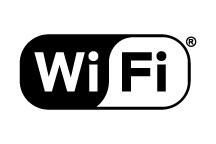"Portable Wi-Fi" Review
25/03/2022
![[Technology terms that are not surprisingly understood] When will "8K" become widespread?The charm and assignment of the next standard of 16 times higher definition of full HD](https://website-google-hk.oss-cn-hongkong.aliyuncs.com/drawing/article_results_9/2022/3/9/53f0a0560fa29f68b80c0dd408432620_0.jpeg)
8K associations 8K certified logo

Words used in the world of technology change every day. In fact, there are many words that have been heard recently, and that they have already penetrated but are not surprisingly understood. This series is a commentary article on such terms. The 8th is about "8K". The public has begun to spread 4K TVs, but in the high -end world, preparations have already begun to enter 8K. Let's introduce the world of ultra -high resolution. Reference: Approximately 700,000 Nikon "Z 9" is flooded with reservations. Realizing an amazing 8K video shooting. It starts with 525 (NTSC) and 625 (PAL/SECAM). The movement to make this even higher resolution started in the 1960s, and in the 1980s, NHK in Japan was put into practical use as "analog high definition". The number of scanning lines at this time was 1125. After this, when determining the standard of high -resolution TV (HDTV: High Definition Television) worldwide, the aspect ratio (vertical ratio) of high -resolution broadcasting (HDTV) is considered in consideration of the affinity with the computer display. It was 16: 9, and it was determined that the horizontal resolution was 1920 dots and the vertical resolution was 1080 dots (the number of scanning lines was 1125). By the way, "standard image quality" for HDTV is called "SDTV" (Standard Definition Television), which is 720x480 dots, equivalent to the DVD video resolution. HDTV has a slightly lower resolution 1280x720 dot standard, but for distinction, 1280x720 is "HD" and 1920X1080 is described as "full HD (FHD)". By the way, there are times when the resolution of the FHD panel is often described as "1080p", but this is a vertical resolution of 1080, and the "progressive system", which is a screen rewriting method (rewrite the whole at once. "P" which represents) is added. On the other hand, there is a standard called "1080i" that adds "I", which represents the "interlace method" (half the screen rewrite the screen), and in fact digital broadcasting on the ground is transmitted and received at a signal of 1080i. This is a method for realizing the smoothness of movement by rewriting quickly while broadcasting the band during the broadcast, but the compatibility with the CRT is good, but the LCD panel, which is a progressive screen rewriting, has become commonplace. Yes, 1080i as a display method was abolished. Now that the CRT is out of the tube, the notation of "P" is almost meaningless, but it has been used as a habit. By the way, when the high -resolution broadcast standard was about to be decided, NHK started developing "Super Hi -Vision" with the aim of further higher resolution. The goal at this time was to "exceed the limit of human visual abilities", and decided to set the scanning line to 4000 classes. This has become an international project and has been called "UHDTV" (Ultra-HIGH DEFINITION TELEVISION). UHDTV is divided into 2000 classes of "4K UHDTV" and 4000 class "8K UHDTV", but the word "4K" and "8K" finally appeared here. This is not a vertical number of scanning lines that have been noticed in the previous standards, but as a notation focusing on the horizontal resolution. In the case of 4K, about 3840 dots = about 4000, 4000 = 4K (4000). K = kilometer). 4K = 3840x2160 dots, 8K = 7680x4320 dots. Probably, the number of pixels of the digital camera is said to be "M -(Mega) Pixel", and it is thought that he considered a catchy expression similar to this for consumers. The conventional FHD is sometimes called "2K" because the conventional FHD is 1920 = about 2000, but it includes QXGA (2048x1536), WQHD (2560x1440), WQXGA (2560x1600), etc. It is ambiguous. There is also a 3K panel, but it is almost used because it is a minor. For around 2k to 3k, most of the smartphone super -wide panels can be said to be. On the PC, the operation interface can be displayed while displaying the 4K content full, so a display of "5K" (5K "(5120x2880) and" 6K "(6016X3384), which exceeds 4K for high -end editing environments, has appeared. 。 It should be noted that there is also an ultra -wide display that is 4K in the horizontal direction and the vertical direction is comparable to FHD.
次ページは:機材とコンテンツの相互進化が普及のカギ